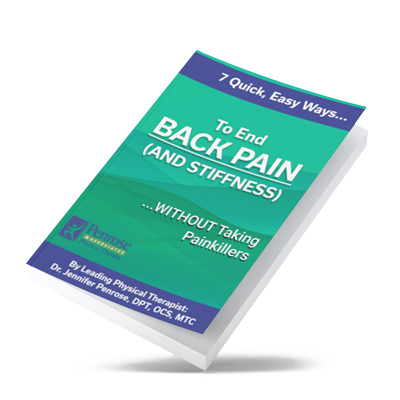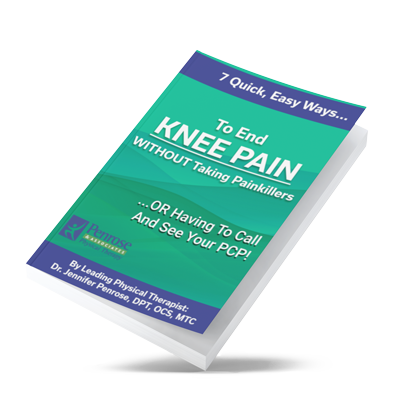LACEY (WA) – Many people just like you are becoming victims of knee pain. This is quickly becoming one of the most common symptoms we see at Penrose Physical Therapy, and one of the areas that we treat the most.
But before I tell you why, have a look and see if this sounds familiar to you? There’s a similar pattern that emerges with knee pain (before arthritis sets in). It starts with a few clicks of the knees, just here and there. Nothing painful, and you think nothing of it. Then as the years go on, some of those clicks become painful, and they start to ache a little bit more, commonly under the knee cap and inside of the knee. Walk around the store for a few hours and they begin to feel sore. Next, you start feeling them as you are getting back up after sitting down from watching your favorite TV show, and you notice it takes a few steps for them to ‘get going’… Lastly, they become even WORSE in the cold weather.
Does that sound familiar? I thought it might. So why does this happen, and why so more now than ever before? Well, let me share this with you; many people are becoming victims of bad footwear trends. “Flats” and pump-style shoes are at the top of the list when it comes to shoes that exacerbate knee pain that I come across almost on a daily basis. They have zero support for your feet. Absolutely none. So eventually, with time, the ligaments (that hold the bones together) around your foot and ankle become too loose. Meaning every time you put any weight into your feet, they come out of the correct position – pulling the rest of you out of position too!
When this happens, most commonly feet “roll in” (pronation might sound familiar if you’re a runner). If the feet roll in, it pulls and twists your lower leg, which inevitably twists your knee. This twist and pull is only subtle to start with, which is why you only notice a few clicks. But then as it gets worse, the knee will start to become painful and damage will start to occur. You should think of “clicky” knees as a warning sign that’s something is wrong, and it’s time to take corrective action. Could this be you?
Here’s a few simple ways to help you check at home (it’s best to stand in front of a mirror):
1. Which way are your knees facing? They should go straight forwards, not towards each other (“knocked knees”), or away from each other either.
2. Bend your knees to do a small squat, as if you were going to sit down onto a chair behind you (any clicks?). In that position look to see where your knees are, they should be in line with your second toes. If not, we’ve got a problem somewhere.
3. Stand up tall again – can you see an arch along the inside of your feet? You should be able to.
4. Now try standing on one leg. Easy? Or does it feel like the inside of your foot and ankle is rolling in? If it’s rolling in or feeling unsteady then this could be because you have lost the support from the ligaments in your feet.
5. If you get pain on the inside of your ankle, try standing on one foot and then lift up onto your toes – if this is painful or you’re unable to do it all, then see a Physical Therapist straight away before any permanent damage is done to the muscle.
6. When you step out of the shower next time, have a look at your foot prints on the floor. It should resemble something like a “C”.
This is just a guide for you to check your feet and knees at home yourself. But if you have any concerns about your knees at all, it’s best to get them checked by a specialist, like a Physical Therapist, who will also check your feet. If it’s a problem with your feet that’s causing your knee pain, don’t worry, we have the perfect solution that protects your knees and allows you to keep wearing your shoes safely.
The author, Jennifer Penrose, is a Physical Therapist and owner of Penrose Physical Therapy. If you have any questions about knee pain, you can call (360) 456-1444 or email jennifer@penrosept.com.
P.S. If you want to hear more healthy tips from Dr. Penrose, tune into her monthly podcast “Stay Healthy South Sound” on iTunes, Google Play or Spotify.






